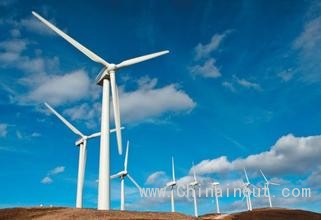但是中国还是有政策来保持今后经济增长的总体稳定的。另外需要强调的一点是,尽管GDP增长有所放缓,但就业形势还不错,失业率呈现下降趋势,劳动力市场的供求关系在改善。
对于中国经济的结构转型,我认为,中国未来的结构调整将加速,其中包括从制造业为主导的增长模式转到服务业主导的模式。这反映出了消费者偏好的变化,也反映出了人口结构的变化。有关人口预测估计,我国的老龄人口在今后的15年将会增加70%,因此作为服务业一部分的医疗行业将会非常快速地发展。
第二个重要的结构性变化是能源结构将从以常规煤炭为主转向更多地消费清洁能源,包括天然气、风能、太阳能。另外,通过创新来提高附加值,对冲劳动力成本快速上升和劳动密集型制造业外移的压力,也是我们的结构转型的一个重要内容。
中国的经济结构变化,将对世界其他国家产生影响。由于中国劳动力成本进一步上升,一些劳动密集型产业转向其他新兴市场,包括印度、孟加拉国、越南,可以促进这些国家的增长,尤其它们的制造业和交通运输业的发展。
同时中国将进一步变成资本输出的国家,包括未来通过金砖五国银行和亚洲基础设施投资银行的渠道。另外中国还将是世界最大的清洁技术的消费和进口国。去年,中国的太阳能和风能的新增装机容量已经上升到世界当年新增装机容量的约30%,这个增长趋势还可能持续。(中国进出口网)

Ma Jun, chief economist of Research Bureau People's Bank of China participated, in 2014 Summer Davos "China Prospects" sub-forum, China's export growth is still relatively good, but there are still downside risks in the economy, mainly because of relatively weak real estate sales. Real estate investment is likely to slow further.
But China still has a policy to maintain future overall stability of economic growth. Another point needs to be emphasized that, although GDP growth has slowed, but the employment situation is still good, the unemployment rate showed a downward trend and relationship between supply and demand in the labor market is improving.
For the structural transformation of the Chinese economy, I think that China will accelerate structural adjustment in the future, including the growth model transformed from manufacturing-led to service sector-led. This reflects a change in consumer preferences and population structure. Population projections estimate that China's aging population over the next 15 years will increase by 70%, therefore medical industry, as part of service industry,will develop very rapidly.
The second important structural change is the structure of energy shifted from conventional coal-based to more clean energy consumption, including natural gas, wind, solar. In addition, it is also an important part of our restructuring to reduce the pressure of rapidly rising labor costs and the relocation of labor-intensive manufacturing by increasing the additional value through innovation.
China's economic structural changes will have an impact on other countries around the world. Due to a further rise in Chinese labor costs, some labor-intensive industries turn to other emerging markets, including India, Bangladesh, Vietnam, and that can promote the economy growth of these countries, especially the development of their manufacturing and transportation.
Meanwhile, China will further become a capital output country, including channels of BRICS Bank and the Asian infrastructure investment banks. In addition, China will be the world's largest consumer and importer of clean technologies. Last year, China's newly installed capacity of solar and wind energy has risen to about 30% of the world’s new capacity, and the growth trend may continue.











